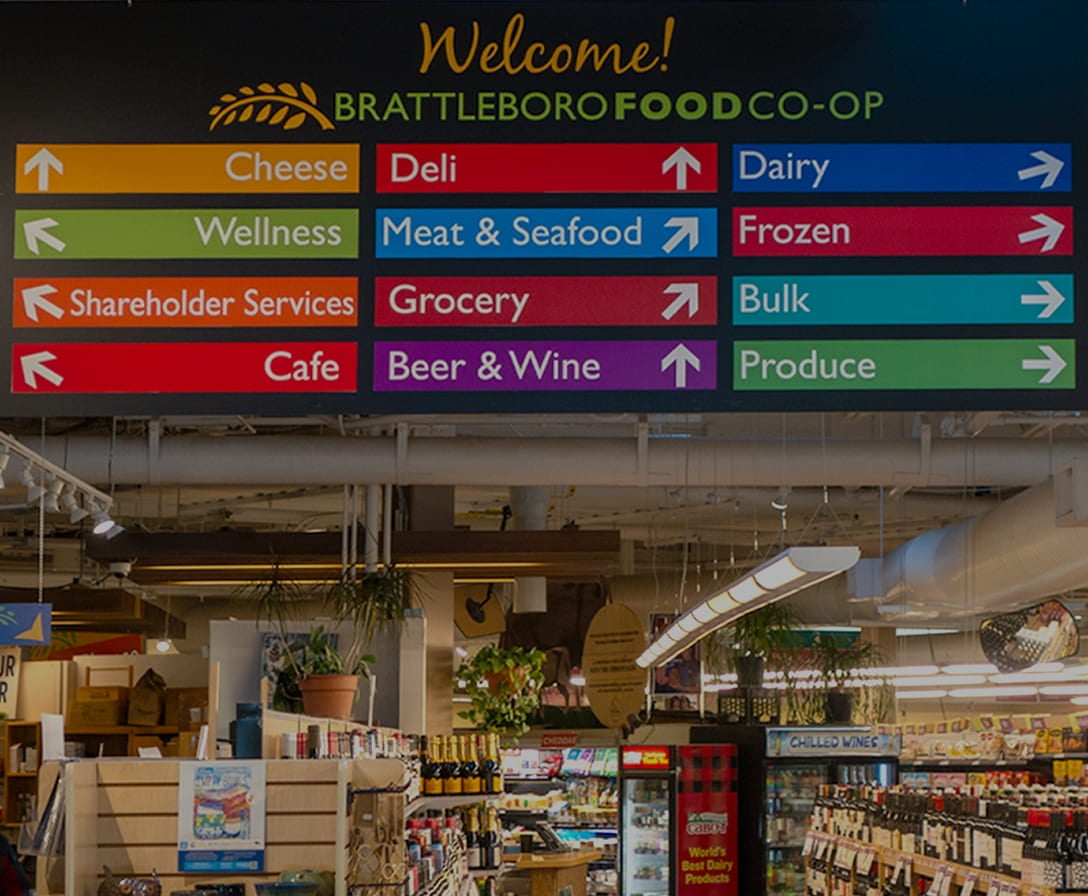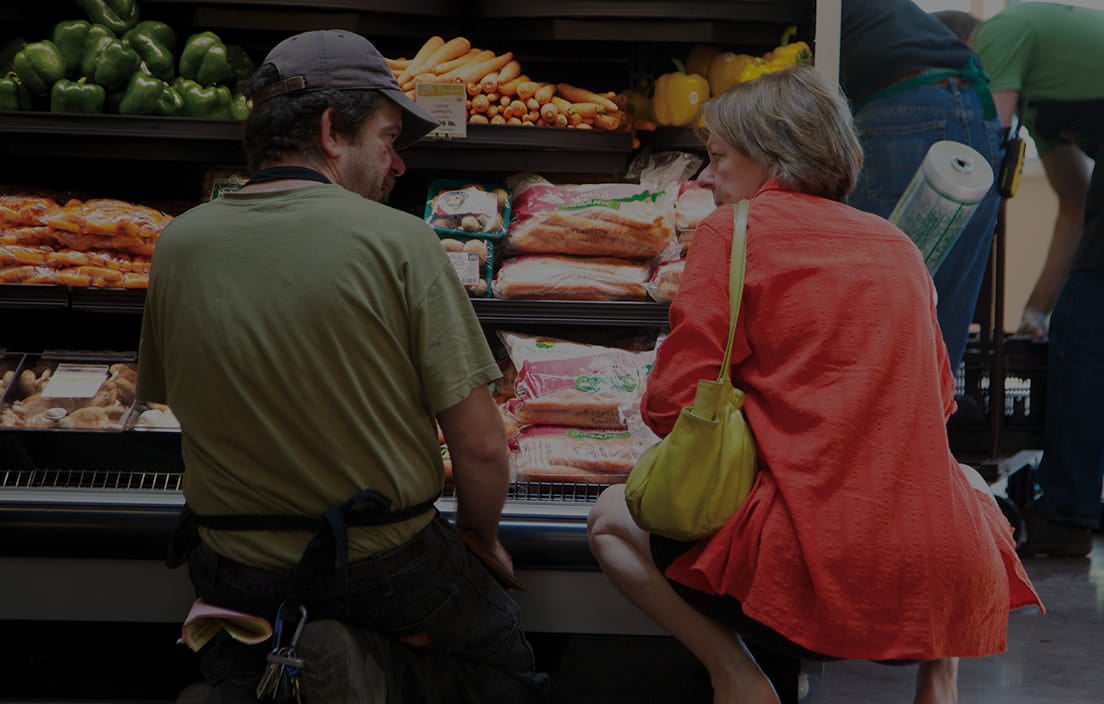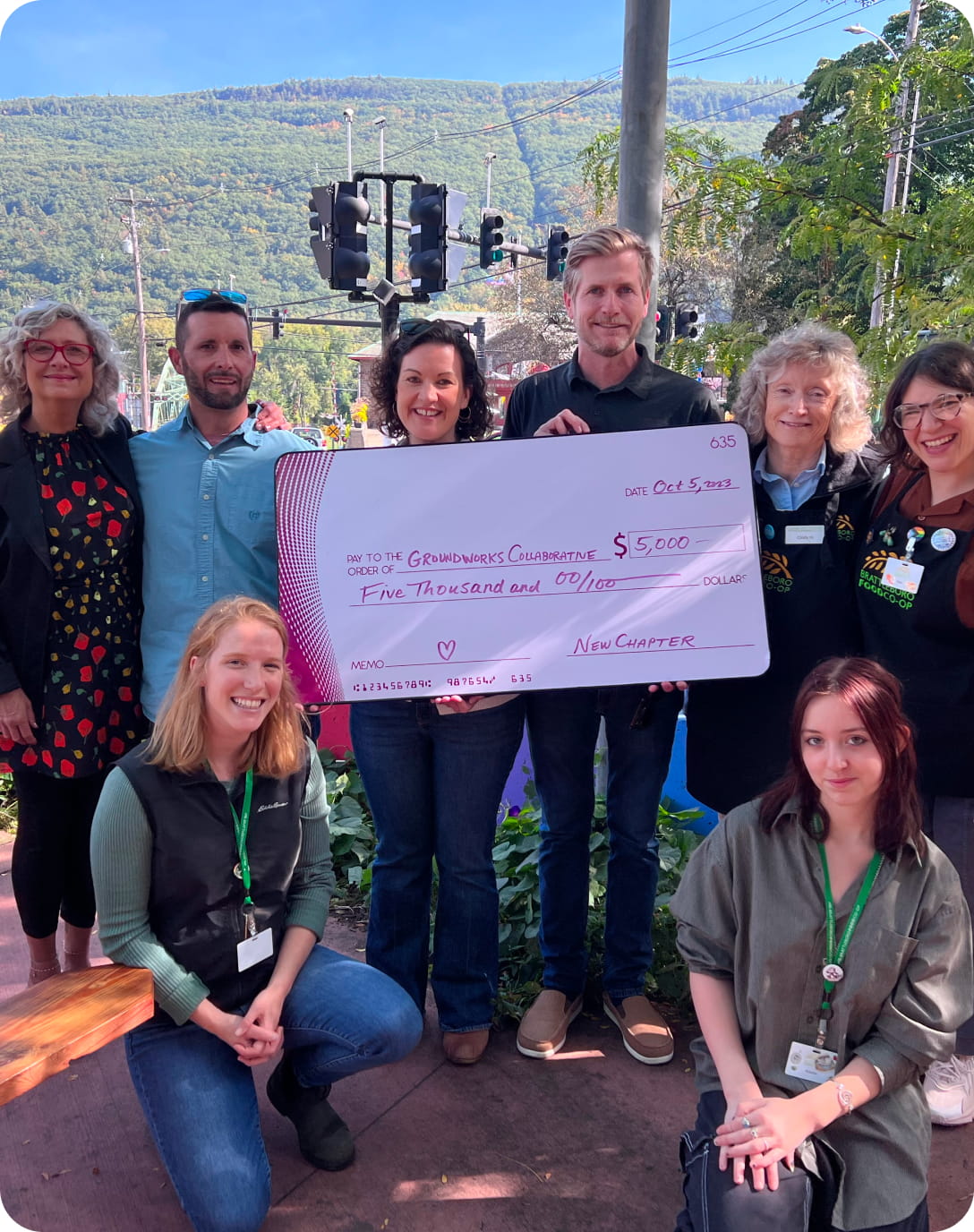Artisan Beverage Cooperative, Makers of Katalyst Kombucha and Ginger Libation
Artisan Beverage Cooperative, a worker-owned co-op located in Greenfield, MA, brews the irresistible Katalyst Kombucha and the remarkable Ginger Libation. We recently interviewed Dave and Jon, two of their five worker-owners, and got the lowdown on the current state of the kombucha industry, the challenges of bringing new probiotic life into the world, and the science of brewing.
We first featured ArtBev as a Producer of the Month back in 2018, and since then, times have changed. They’ve had to adapt to a host of new developments, both in the world at large (COVID, inflation) and in the world of kombucha, which has gone from being a niche beverage to being sold at gas stations and big box stores. Brewing kombucha for commercial sale is challenging, because the product itself is inherently dynamic and somewhat unpredictable: it’s alive, and requires oxygen to ferment, so it’s affected by whatever environment it’s exposed to in all its variability. That unpredictability conflicts with the need for consistency, one of the core elements of selling to a larger market. Brewing kombucha that maintains a high level of quality, flavor, and feel is a true feat, and Katalyst has mastered the art.
Exposure to its environment also means kombucha contains hyper-local life forms. For instance, when you look at it under a microscope, California kombucha is different from the stuff brewed in New England. One wonders what, if any, benefit there might be to consuming foods that contain probiotics that thrive at home versus far away, sort of like how local pollen can help people with allergies to local flowers. Dave said that alongside the growth and commercialization of kombucha have come numerous scientific studies looking into a wide range of questions, including ones about the differences between these forms of kombucha life that exist in distinct geographic areas, potentially different health benefits, and their effect on the brewing process.
Perhaps the biggest challenge in the world of booch is keeping alcohol content under .5%. You may have heard rumors about the Lindsay Lohan kombucha-gate a few years ago: the celebrity reportedly blamed a failed blood alcohol test on kombucha, and supposedly it set off a massive shift in the industry. It’s true that a few years ago, many brands were suddenly no longer available, and when they returned, some had a different quality. But Dave told a more down-to-earth version of what led to the disruption. He said that back in 2008, someone in Maine tested a booch-brewer’s brew for its alcohol level and discovered that it was above the limit for non-alcoholic beverages. Subsequently, distributors started doing voluntary recalls to avoid any potential legal trouble, and producers had to scramble to figure out how to exert some control over this part of the fermentation process in order to re-engage with the mass market.
Since then, the effort to simultaneously keep alcohol levels below .5% and brew kombucha up to the same standards of taste and probiotic benefit has had a major impact on the burgeoning industry’s culture and production methods. For instance, the world of kombucha brewing is surprisingly secretive. Unlike the independent beer-brewing sector, in which makers freely share knowledge and experience, kombucha brewing businesses tend to hold their cards close to their chest, especially when it comes to grappling with alcohol content. It’s rumored that some brewers remove alcohol via a high-tech process called vacuum distillation, wherein the alcohol is removed without using heat (thereby not killing the kombucha cultures) in a special machine that costs a fortune. Other brands may use certain ingredients in their recipes that impede the fermentation process slightly, such as kiwi juice.
Forced carbonation is another thing that slows fermentation. Katalyst Kombucha is available in bottles and cans, and you’ll find the difference is in much more than just the container. Dave said the bottles appeal more to the die-hard, old-school kombucha fans: the carbonation is totally natural (the result of the fermentation process), and they’re good candidates for secondary fermentation, also known as refermentation. If they’re kept in the right conditions, they will continue to get stronger and more alcoholic in the bottle. There’s less consistency, but the product can feel closer to a high-quality home brew. The cans, however, are force-carbonated, which results in an end product that is more consistent and pleasantly bubbly. In fact, this is Dave’s favorite way to enjoy Katalyst. They also sell their forced-carbonation booch on tap. You can visit their factory tap room in Greenfield on Saturdays from 2-6 pm to fill a growler with special limited editions, or enjoy tastings of a variety of kombucha and Ginger Libation flavors.
They debuted their cans in the fall of 2019, which was extremely fortuitous. This new component of their business meant they were well-positioned to weather the pandemic because they were able to handle the loss of their keg business. Growler filling stations at area co-ops had previously been a significant part of their income, but nobody wanted to purchase on tap during those early days of the outbreak. That, along with PPP support from the government, allowed them to survive when others could not.
In contrast to the wildness of kombucha, producing more traditional fermented drinks is relatively undramatic. Brewing beer and other beverages at scale has been going on for centuries, and the equipment and methods have been developed and honed over such a long time that a lot of the guesswork has been removed. In comparison, brewing kombucha is like being a midwife at a nursery full of very strange and somewhat unruly babies. But it still requires a tremendous amount of skill and integrity to produce a drink as deliciously fresh and zesty as Ginger Libation, a pre-prohibition-style hard ginger beer. They use a recipe almost identical to the one that was so popular in the late 19th and early 20th centuries. Along with the organic ginger, lemon, lime, and pineapple juice that constitutes the original Libation recipe, they add a specific yeast strain to the large, sealed vats in which it ages. It’s temperature-controlled and completely cut off from environmental inputs and fluctuations during its weeks-long fermentation time, but nonetheless, magic still happens. Jon said during earlier COVID days, the joke was that Ginger Libation was the New England litmus test: he’d give it to friends who were escaping NYC, and the idea was that if they liked it, they’d move here. (This actually did prove to be true in a couple of instances.) They’ve also created a line called Ginger Libation Light. To develop this series, they took inspiration from the hard seltzer production process: they make a strong batch of Ginger Libation which is then diluted with water, fruit juices, and flavor extracts. The result is a version of Ginger Libation with 5% ABV vs 9%, with a refreshing, lightly sweet taste profile.
ArtBev goes above and beyond to capture the freshness of the ingredients in all their products and to maintain a level of ethics in their sourcing when it comes to fair trade and workers’ rights. Though it’s not possible for them to have a wholly local product line, they do their best by focusing on purchasing from other cooperatives, organic farms, and organizations that align with their cooperative values, no matter where they’re located. They use black and green teas from Equal Exchange (another worker-owned cooperative) and organic cane sugar to start their kombucha, and an assortment of local fruits, herbs, and veggies are wonderful additions. They use juice from the Growers’ Co-op in NY in their Concord Grape flavor, locally-grown berries in ShizandraBerry, and a LOT of organic ginger! They also make a beautiful Hopped kombucha that has a depth of flavor and relaxing kick not often found in a non-alcoholic beverage. ArtBev truly goes the extra mile to make the highest quality brews possible, and you can taste it in the results.
What does it mean that ArtBev is a worker-owned cooperative? Their mission isn’t just to make a profit. Strengthening the local food system is baked into their DNA, as is contributing to an equitable economy. For years the team was down to just Dave and two other owners. But very recently Jon and Erik, who have both worked at ArtBev for multiple years, became owners as well. That means that they can now participate in board meetings and have more input into the direction of the business. Even for non-owning employees, there’s a sense of shared labor and commitment that carries into the everyday. It’s less of a hierarchical work environment and more of a team effort. Everyone on staff has their job, but everybody does a little bit of everything.
This is important, because one of the remarkable things about Art Bev is that they still brew a lot of their kombucha in 10-gallon ceramic crocks, old-school style, which is quite labor-intensive on such a large scale. They must tend to, rotate, and clean hundreds of exceedingly heavy vessels. They currently use a mixture of crock kombucha and kombucha brewed in large, stainless steel vats designed for winemaking, which they’ve repurposed for kombucha by making them open-air on the top. (Kombucha brewers often have to improvise solutions like this, since there isn’t a lot of infrastructure or equipment that exists to support this new industry.) They blend the two together to get the best of both worlds: the perfected, ancient quality of the crocks and the consistency and efficiency of the vats.
ArtBev is continually experimenting and honing their brewing process. In the future they hope to produce more kombucha in the larger vats to allow for further consistency and efficiency, but because they want to make sure they’re able to create the same delicious kombucha they’ve been making for years, they are waiting until their process has been tweaked to perfection before they decide to phase them out. They must manage the relationship between the fermenting tea’s surface area and the vessel’s depth because kombucha requires open-air fermentation. Before they fully switch over, they have to learn how to compensate for the significant difference in the height-to-width ratio of the large vats from the crocks, which are taller and narrower.
As with many of our Producers of the Month, rapid or large-scale growth is not one of ArtBev’s desires. The superior quality of Katalyst Kombucha and Ginger Libation is reserved just for us here in the Northeast. The beautiful product design and high professionalism, quality, and consistency of their products can belie the fact that ArtBev is a truly local business that creates products by and for this region alone. The West Coast kombucha giants continue to crowd the market, and sometimes it’s hard to differentiate between what lies behind the labels on all these hot new probiotic beverages. The competition also means they’re pushed to expand their offerings. Right now, they’re experimenting with creating a hard kombucha, which is the newest trend in the booch industry. Whatever they come up with, you can be sure that by the time it reaches our store, it’s going to be flawless. The experience of drinking any of ArtBev’s products, whether Katalyst or Libation, is of profoundly high quality and a commitment to only the best.
Artisan Beverage Cooperative’s mission statement:
The Cooperative’s mission is to produce the highest quality beverages possible taking into account the social and economic impacts of all decisions of the cooperative, and to demonstrate, through our success, the viability of worker cooperatives and fairly traded goods.
By Ruth Garbus
About Producer of The Month

Shop Online

On Sale Now!

